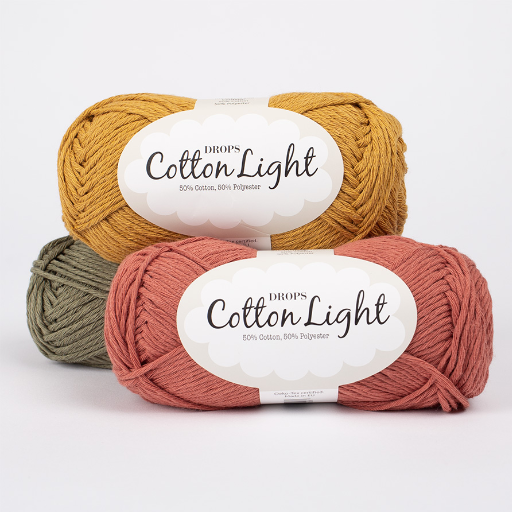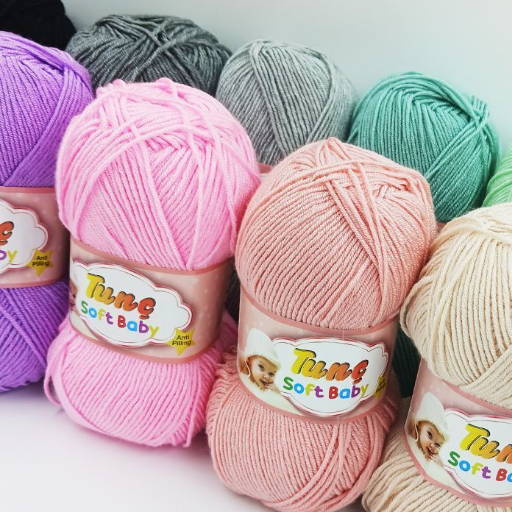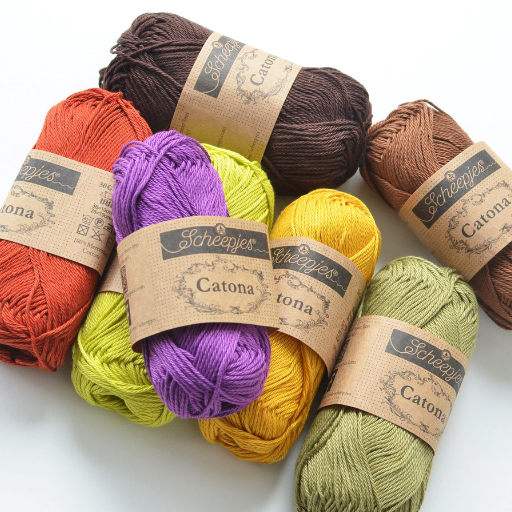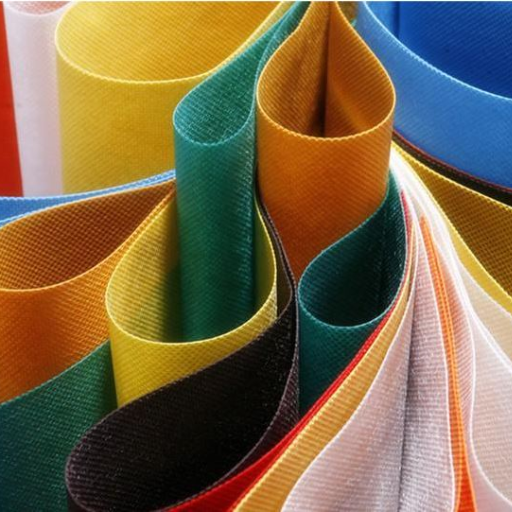Acrylic yarn is a popular choice among crocheters and knitters because of its affordability, wide range of vibrant colors, and versatility. However, projects using the yarn need proper care when washing and maintaining to ensure that it serves its intended purpose for a long. The purpose of this guide is to provide washing techniques step by step to acquire stitching masterpieces made out of acrylic yarn. In the latter part of the guide, developed tips for drying and storage also aim to protect the artwork from damage. This comprehensive resource is meant to serve all users regardless of their level of crafting expertise, tackling every question regarding acrylic yarn care.
How to Properly Wash Acrylic Yarn?

Washing acrylic yarn requires attention to detail but is relatively straightforward due to its durability. Follow these steps for effective cleaning:
- Read the Label: Begin by checking the yarn or project label for any specific washing instructions as some blends may have unique requirements.
- Use Cold or Warm Water: Acrylic yarn is sensitive to high temperatures, which can damage its fibers. Stick to cold or warm water to maintain its texture and integrity.
- Select a Gentle Detergent: Opt for a mild or non-biological detergent to avoid harsh chemicals that could degrade the fibers or dull the colors.
- Hand-Wash or Machine-Wash on Gentle Cycle: Hand-washing is ideal for delicate projects, but most acrylic yarns can also be safely washed in a machine, provided the gentle cycle and a mesh laundry bag are used.
- Rinse Thoroughly: Ensure all detergent is completely removed by rinsing the yarn with clean water; leftover soap can leave residue or stiffness. Avoid wringing the item, as this could stretch the material.
By adhering to these concise washing steps, you can keep your acrylic yarn projects clean and long-lasting without compromising their quality.
Understanding Acrylic Yarn Properties
Acrylic yarn of synthetic nature is spun from polymerized acrylonitrile and is known for its lightweight, durable, and affordable characteristics. Unlike natural fibers, acrylic is resistant to mold, mildew, and pests, making it a low-maintenance choice for many projects. It is machine washable and color-fast which ensures that vibrant colors are maintained over time. On the other hand, due to its low melting point, acrylic is prone to static, pilling, and melting under high temperatures. Nonetheless, understanding these characteristics ensures appropriate care and maintenance of yarn made from acrylic, and items utilizing acrylic yarns are preserved for prolonged periods.
Choosing Between Machine Wash and Hand Wash
When deciding between machine washing and hand washing acrylic yarn, it is crucial to consider the type of project and the specific washing instructions provided by the manufacturer. Acrylic yarn is generally machine washable due to its robust synthetic nature, but using a gentle cycle with cold or lukewarm water is strongly recommended to prevent unnecessary wear, pilling, or distortion. Placing the item in a mesh laundry bag can offer additional protection during the machine wash process.
For more delicate projects like lacework or garments with intricate details, hand washing is preferable to minimize stress on the fibers. Use lukewarm water with a mild detergent, gently swish the item, and avoid wringing it to prevent damage or stretching. After washing, always reshape the item and lay it flat to dry to preserve its original form and structural integrity. Selecting the appropriate method based on the project’s complexity and care labels ensures the longevity and quality of your acrylic yarn creations.
Steps for Hand-Washing Acrylic Items
- Prepare the Wash Basin: Fill a clean basin or sink with lukewarm water. Ensure the water is not too hot, as excessive heat can cause the acrylic fibers to weaken or lose shape.
- Add Mild Detergent: Use a small amount of gentle, non-abrasive detergent specifically formulated for delicate fabrics. Avoid using harsh chemicals or bleach.
- Submerge and Agitate Gently: Place the acrylic item in the water and gently swish it around with your hands to allow the detergent to lift dirt and oils. Avoid scrubbing or wringing, which can stretch or damage the fibers.
- Rinse Thoroughly: Drain the soapy water and refill the basin with clean lukewarm water. Rinse the item thoroughly to remove all detergent residue, repeating this step as necessary.
- Remove Excess Water: Lift the item carefully and press out excess water using your hands. Do not twist or wring the fabric. For additional moisture removal, lay the item flat on a clean towel and roll it up to gently press out the water.
- Dry Flat: Reshape the item to its original dimensions and lay it flat on a dry towel or drying rack. Ensure it is placed in a well-ventilated area away from direct sunlight or heat sources to prevent fading or distortion. Avoid hanging acrylic items, as this can lead to stretching.
What are the Best Practices for Machine Washing Acrylic Yarn?

When machine washing acrylic yarn, follow these best practices to preserve its integrity:
- Use a Gentle Cycle: Select a delicate or gentle wash cycle on your machine to minimize agitation and reduce the risk of fiber damage.
- Cold Water Wash: Always use cold or lukewarm water to prevent shrinkage or distortion of the acrylic fibers.
- Mild Detergent: Opt for a mild, non-abrasive detergent to clean the yarn without compromising its softness.
- Protect with a Mesh Bag: Place the acrylic items in a mesh laundry bag to prevent tangling or snagging during the wash.
- Avoid Fabric Softener: Do not use fabric softener, as it may coat the fibers and decrease their breathability.
- Low Spin Setting: Use a low spin setting to reduce stress on the yarn and prevent excessive water retention.
- Dry Flat: After washing, reshape and lay the item flat on a towel or drying rack to dry naturally. Avoid machine drying or hanging to prevent stretching or warping.
By adhering to these practices, you can maintain the durability and appearance of your acrylic yarn items.
Using the Gentle Cycle on Your Washing Machine
The gentle cycle on your washing machine is specifically designed to minimize mechanical agitation, making it ideal for delicate fabrics and materials like acrylic yarn. This setting utilizes slower spin speeds and reduced tumbling action to prevent fiber damage and stretching. When washing acrylic yarn items, ensure they are securely placed in a mesh laundry bag for extra protection, and choose a water temperature of cold or lukewarm to maintain the fibers’ integrity. By selecting the gentle cycle, you significantly reduce the risk of pilling, tangling, and wear, prolonging the lifespan of your handcrafted or delicate items.
Importance of Mild Detergent and Cold Water
The structure and appearance of acrylic yarn items can be best preserved by washing them in cold water and mild detergent. Using harsh detergents that contain strong elements can greatly weaken the fibers causing them to fade or get damaged over time. A mild detergent on the other hand would be much kinder when doing the cleaning while fully retaining the softness and flexibility of the material. Equally as important would be the cold water which prevents the fibers from stretching or shirking, something accustomed to high-temperature washes. Moreover, cold water reduces the chances of color bleeding, especially in yarns that have been vibrantly dyed. This combination helps preserve the items. In doing so, it not only keeps the items clean but also aids in increasing the lifespan of the item, thus making it a preferred choice when caring for acrylic yarn.
Avoiding Damage: Heat Setting and Fabric Softeners
The care of acrylic yarn requires specific attention to fabric softener usage and furthers heat settings. Acrylic fibers have an adverse response to heat, rendering the use of excessive temperatures warp-inducing, shrinkage-causing, or even melting the fibers entirely. Therefore, any iron used on acrylic fibers should be set to the lowest heat setting or the cool air cycle should be used during the drying process of the acrylic yarn. enabling the proper cooling cycle will protect the structural integrity of the fiber while maintaining its original shape and quality.
Fabric softener use should be avoided as it coats the fiber and reduces its breathability and softness with time. It will also protect the absorbent properties of the softener thus aiding towards the buildup that dulls the fiber. Fabric softener used in yarn will diminish the soft properties of the yarn. For increased softness, fabric-specific alternatives such as a vinegar solution or milder yarn-friendly conditioners will suffice. Softness is easily increased and the pristine condition of the acrylic yarn can be maintained by implementing these strategies.
How to Dry Your Acrylic Yarn Items Effectively?

To dry your acrylic yarn items effectively, always use a flat drying method to prevent stretching or distortion of the fabric. Lay the item on a clean, dry towel in its original shape, ensuring it is smoothed out to avoid wrinkles or creases. Avoid hanging acrylic yarn items, as this can cause the fibers to elongate due to gravity. If machine drying is necessary, adjust the dryer to a low-heat or air-dry setting to prevent warping or melting of the synthetic fibers. Ensuring proper air circulation around the item will also expedite the drying process while maintaining its structure and softness.
Methods to Remove Excess Water Safely
To remove excess water from acrylic yarn items, begin by gently pressing the item between two clean, dry towels. Avoid wringing or twisting, as this can damage the fibers. Instead, use a rolling technique with the towels to apply even pressure and wick away moisture. If additional water removal is needed, a centrifugal spin cycle in a washing machine set to a low-speed or delicate setting can be employed. This step should be done cautiously to prevent stress on the yarn. For smaller items, a salad spinner can serve as a controlled, low-impact option to extract water without causing distortion. These methods ensure effective water removal while maintaining the quality and structure of the acrylic yarn.
Why You Should Air Dry Instead of Using a Dryer
Letting acrylic yarn items dry on their own is preferred to using a dryer because it does not damage the yarn. Synthetic materials tend to warp, shrink, or lose their elasticity with exposure to high heat. Also, yarns can pill during a tumble dryer cycle, which can distort and change the original form of the yarn. Air drying is a low-impact method for the items to remain soft and well-preserved for years to come. For effective air drying, the item should be placed on a clean, flat surface like a drying rack and reshaped to the intended form to help retain its shape. This gives superior protection against machine drying which helps extend the life of the acrylic yarn.
Preventing Direct Sunlight and Heat Damage
Acrylic yarn is prone to fading, weakening, and loss of structural integrity from prolonged exposure to heat and direct sunlight. To prevent this damage, knitted items made from acrylic yarn must always be dried and kept in shaded and well-ventilated areas. Sunlight contains ultraviolet (UV) rays which fade synthetic materials over time, causing brittleness in the yarn. Also, high temperatures cause melting or distortion which can result from placing items near heaters or in a hot car. When storing acrylic yarn items, ensure that they are kept in cool and temperature-controlled environments to preserve their color, elasticity, and longevity. Proper care and maintenance enhance the appearance of acrylic yarn products while minimizing the risk of irreversible damage.
How Does Maintaining Acrylic Yarn Longevity Work?

Effective preservation of certain products made of acrylic yarn comprises minimizing wear and tears from physical and environmental factors by applying appropriate storage and maintenance techniques. Regular washing of said items such as acrylic garments and fabrics in cool water with the use of mild detergents gently prevents fiber decomposition. Air-drying the item in a cool shaded place away from heating sources further diminishes the risk of damage. Protecting fabrics from ultraviolet light when put in storage helps to maintain strength and color. Moreover, garments made of acrylic yarn should not be stored under great tension or heavy weight to prevent fatigue and deformation. By doing so, these measures will greatly enhance the dimensional and aesthetic permanence of products made of acrylic yarn in the long term.
Understanding Care Instructions on Yarn Label
Care instructions present on yarn labels serve the critical purpose of preserving the longevity and quality of the products crafted using acrylic yarn. Such labels usually comprise illustrations and text detailing the recommended methods of washing, drying, and general handling of the yarn. For instance, it is common for the label of an acrylic yarn to recommend using a washing machine or hand washing the yarn in warm or cool water as excessive heat tends to damage synthetic fiber. These labels often recommend using a gentle cycle and a mild detergent to avoid any potential damage to the texture of the yarn. Along with these, the drying procedure typically recommends air-drying or low-heat tumble drying to minimize any chances of fiber shrinkage or deformation. In addition to the drying instructions, yarn care labels may also indicate whether ironing is permissible or not; in the case of acrylic yarn, direct exposure to high heat is typically avoided along with being set flat under the lowest setting with extreme caution. Following these properly ensures that the material maintains its structural integrity over time while also being visually and functionally useful.
Common Mistakes that Cause the Yarn to Deteriorate
- Using High Temperatures
One of the most frequent mistakes is exposing acrylic yarn to excessive heat during washing, drying, or ironing. High temperatures weaken synthetic fibers, causing them to lose their elasticity and structure. Always opt for cool or warm water, air-drying, and avoid direct heat from irons or other sources.
- Incorrect Washing Methods
Harsh detergents, aggressive agitation, or using a washing machine’s heavy cycle can result in fraying, pilling, or even breakage of the yarn fibers. It is crucial to use mild detergents and a gentle wash cycle to preserve the yarn’s texture and color.
- Neglecting Proper Storage
Exposing acrylic yarn to direct sunlight, high humidity, or improper storage conditions can lead to discoloration, mildew, or fiber degradation. Always store yarn in a dark, dry, and cool place, preferably in sealed containers to keep dust and moisture away.
Avoiding these common mistakes will help extend the lifespan and quality of your acrylic yarn, ensuring your projects remain durable and visually appealing.
Regular Practices for Maintaining Acrylic Yarn
- Washing and Cleaning
Always clean acrylic yarn projects with care to preserve their durability. Hand washing with cold or lukewarm water and mild detergent is highly recommended. If machine washing is necessary, utilize a gentle cycle and place items in a mesh laundry bag to minimize agitation. Avoid fabric softeners as they can weaken fibers over time.
- Drying
After washing, reshape your acrylic yarn items while wet and lay them flat to air dry. Avoid hanging, as this can cause stretching and distortion. Never use a dryer with high heat settings, as excessive heat can damage synthetic fibers. If quicker drying is needed, use the low or no-heat setting of your dryer.
- Storage
Proper storage is essential for maintaining the quality of acrylic yarn. Keep yarn and finished projects in a clean, dry, and dark environment to prevent exposure to sunlight and moisture. Seal yarn in airtight bags or containers to protect against dust, pests, and mildew. Adding silica gel packets to the storage space can help control humidity levels.
- Preventing Pilling and Wear
Regularly inspect and maintain your projects by trimming any loose threads or pilled fibers with care. To further reduce wear, minimize exposure to friction, especially in frequently handled or used items such as blankets or sweaters.
By incorporating these practices into your yarn-care routine, you can enhance the longevity, texture, and appearance of your acrylic yarn projects.
What are the Benefits of Acrylic Yarn for Knit and Crochet Projects?

- Affordability
Acrylic yarn is cost-effective, making it an excellent choice for budget-conscious crafters or large-scale projects.
- Durability
It is highly resistant to wear, pilling, and stretching, ensuring long-lasting projects that maintain their shape and texture.
- Variety
Available in a vast range of colors, textures, and weights, acrylic yarn provides versatility for different creative applications.
- Ease of Maintenance
Most acrylic yarns are machine washable and quick-drying, simplifying the maintenance of finished projects.
- Lightweight and Warm
This yarn provides warmth without adding significant weight, making it ideal for clothing, blankets, and other accessories.
- Hypoallergenic Properties
Acrylic yarn is a good alternative for individuals who are sensitive to natural fibers like wool, as it is typically hypoallergenic.
By offering these advantages, acrylic yarn is a reliable and versatile material for both beginners and experienced knitters or crocheters.
Why Yarn is a Popular Choice for Crafters
Due to its nature, yarn is accessible for any skill level which makes it a very important material for craftsmen. This is because it also has creative potential and is very versatile. In addition, it is also used in knitting, crocheting, weaving, and even macrame. This provides endless opportunities for artistic expression. The wide range of colors and different weights and textures of the fibers make the craft even more interesting. Therefore, unique designs can be created. For advanced craftsmen, yarn serves as more than just a material. It poses a challenge with the intricate patterns and techniques that can be made. Finally, reputable craftsmen appreciate the creative potential of yarn. Thus, making it a staple in the community.
Exploring the Easy Care Nature of Acrylic Yarn
Acrylic yarn is highly valued in the crafting world for its low-maintenance care requirements and durability. One of its most significant advantages is its machine-washable nature, reducing the time and effort needed to clean finished projects. Unlike many natural fibers, acrylic yarn resists shrinking, stretching, and fading, making it an optimal choice for long-lasting, vibrant creations. It is also quick-drying and stain-resistant, ensuring practicality for items that are frequently used, such as blankets, clothing, and accessories. Furthermore, its affordability and hypoallergenic properties make it accessible and safe for a wide range of users, including those sensitive to wool or other natural fibers. These qualities collectively demonstrate why acrylic yarn is a top pick for projects requiring minimal upkeep without sacrificing aesthetic appeal or functionality.
The Versatility of Acrylic Knits and Crochet Projects
Acrylic yarn is a widely used synthetic fiber in knits and crochet projects due to its versatility, affordability, and durability. This material is lightweight, hypoallergenic, and available in a vast range of colors, making it ideal for crafting various garments, accessories, and home décor items. Acrylic’s ability to mimic the texture of wool provides warmth and softness while remaining easy to care for, as it is machine washable and resistant to shrinking or wrinkling. Additionally, it is an excellent choice for beginners due to its affordability and broad availability. However, acrylic is less breathable than natural fibers, which may impact comfort in warmer climates. Despite this, it remains a popular choice for its adaptability and practical qualities.
References
Frequently Asked Questions (FAQ)
Q: What is the best way to wash acrylic yarn to maintain the quality?
A: Acrylic yarn is a synthetic fiber, making it easy to care for. To maintain the quality of your acrylic yarn, wash on a gentle cycle or hand wash using cool or lukewarm water and add a mild detergent. Avoid using hot water as it can damage the yarn.
Q: Can I wash my acrylic crochet projects in a washing machine?
A: Yes, you can wash acrylic crochet projects in a washing machine. It’s best to use a gentle cycle with cool water. Always check the care label on your yarn to ensure it is machine washable.
Q: How should I dry acrylic yarn after washing?
A: After washing, gently reshape your acrylic projects and lay them flat to dry on a dry towel. Avoid machine drying or using high heat, as it can cause the yarn to lose its shape and damage the fibers.
Q: Can I use bleach on acrylic yarn?
A: It is not recommended to use bleach on acrylic yarn, as it can cause the yarn to become discolored and damage the fibers. Always use a mild detergent for proper care.
Q: What water temperature should I use for washing acrylic yarn?
A: Use cool or lukewarm water when washing acrylic yarn. Hot water can cause the yarn to lose its shape and damage the fibers.
Q: How do I properly store acrylic yarn?
A: Store acrylic yarn in a cool, dry place, away from direct sunlight. Proper care includes keeping it in breathable containers to avoid moisture buildup, which can damage the yarn.
Q: How can I avoid damaging acrylic fibers during washing?
A: To avoid damaging acrylic fibers, always wash on a gentle cycle or hand wash. Use lukewarm water and a mild detergent, and avoid wringing or twisting the yarn.
Q: Is it okay to machine-dry acrylic yarn on a low heat setting?
A: While some may choose to machine dry on a low heat setting, it is safer to lay acrylic projects flat to dry to prevent any potential damage or loss of shape.
Q: What is the proper care for a sweater made from acrylic yarn?
A: For proper care of an acrylic sweater, machine wash on a gentle cycle using cool water and a mild detergent. Lay flat to dry to maintain its shape and quality.


















